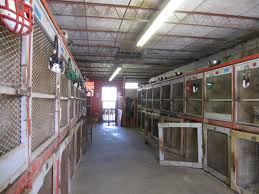 “I know you’re out there. I can feel you now. I know that you’re afraid… you’re afraid of us. You’re afraid of change. I don’t know the future. I didn’t come here to tell you how this is going to end. I came here to tell you how it’s going to begin… I’m going to show these people what you don’t want them to see. I’m going to show them a world without you. A world without rules and controls, without borders or boundaries. A world where anything is possible. Where we go from there is a choice I leave to you.”
“I know you’re out there. I can feel you now. I know that you’re afraid… you’re afraid of us. You’re afraid of change. I don’t know the future. I didn’t come here to tell you how this is going to end. I came here to tell you how it’s going to begin… I’m going to show these people what you don’t want them to see. I’m going to show them a world without you. A world without rules and controls, without borders or boundaries. A world where anything is possible. Where we go from there is a choice I leave to you.”
“Why do my eyes hurt?”
“You’ve never used them before.”
–The Matrix
“Compassion is most important for happiness. We must treat fellow human beings as equal, that is very important, but also all beings who have capacity for feeling. So the innate desire for happiness that is the basis of human rights extends to all sentient beings, including animals and insects.”
–The Dalai Lama
When our greyhound, Seba, first came home—they call it “going into retirement”—I learned they must be taught about things like stairways, glass doors and shiny floors. Previously, this has not been part of their life experience. At the time, I quipped, “Wow, it’s like we just unplugged her from The Matrix.”
Greyhound racing began in 1912 when the mechanical lure was invented. Today, tracks still operate in seven US states (Alabama, Arkansas, Arizona, Texas, Florida, West Virginia and Iowa)—despite well publicized reports of animal cruelty, poor care and restricted daily lives of the dogs. How is this allowed to go on, you ask? One word: money. And lots of it.
When I was deciding which greyhound would be right for us, I was provided a link to Seba’s pedigree. Curious about her parents, I came across a photo of her father wearing a banner showing that he had won $50,000 for his owners in a race. That’s when I really got it—these dogs are nothing more than money makers.
Much like in the fictional Matrix, tens of thousands of greyhounds are bred each year for one purpose: to energize a “winning” bloodline. Their racing careers are generally over at four years, but they may be kept longer if they are fast or killed by the track at any age if they are injured or lack racing potential.
Seba was rescued at less than two years. I believe she was retired because she prefers to stay with the pack when running instead of lead it to the finish. But for every dog that comes home, thousands more are still killed each year—often by gunshot, bludgeoning, abandonment, and starvation. Only a few are humanely euthanized by a vet.
Those that are allowed to live and race spend most of their lives in cramped crates. Their kennels are not climate controlled, so they suffer from heat and cold exposure. They are fed raw 4D meat (this is meat from dying, diseased, disabled and dead livestock) and are hosed down, not given baths. They are infested with ticks.
It is unclear how many of these dogs are still destroyed each year because there are not enough homes to accept them. Current estimates range from 3,000 to 8,500. This includes culled puppies and “retirees” who were not rescued. They may be sold to research labs, used for breeding or sent to foreign racetracks with even more appalling conditions.
Unlike animal breeding, zoos, circuses, and animal transportation via airlines—greyhound racing is not governed by the federal Animal Welfare Act. The Humane Society of the US investigates industry abuses and initiates legislation to ban greyhound racing. But they need your help. Here’s what you can do:
- Tell everyone.
- Consider a greyhound if you are interested in adopting a companion animal.
- If you can’t adopt, volunteer your time or donate to a rescue organization.
- If you live in a state that operates greyhound racing tracks or your state has not yet banned it (Colorado, Connecticut, Kansas, Oregon or Wisconsin) write to your state officials. Contact The HSUS for model legislation to ban greyhound racing.
- Distribute copies of this web page:
Greyhound Racing: Death in The Fast Lane
 Every time I look at Seba, out in the back yard tossing a toy around and running to catch it, leaping about like a happy gazelle, she makes my heart sing. Every dog should have this life. And just like Neo of The Matrix, YOU ARE THE ONE who can make that happen.
Every time I look at Seba, out in the back yard tossing a toy around and running to catch it, leaping about like a happy gazelle, she makes my heart sing. Every dog should have this life. And just like Neo of The Matrix, YOU ARE THE ONE who can make that happen.
Don’t give up—for all their sakes.
Author’s Note, 10/15/15–Have a first hand perspective of a greyhound track, positive or negative? Please send us your assenting or opposing article.
![]() Joy Jones, our Editor In Chief, is the Vice President of Your Pet Space, a cage free dog boarding facility serving the greater Las Cruces, NM area. She is also a syndicated columnist living with her husband Dave. When not working on Your Pet Space, she writes a metaphysical column, as well as urban fantasy and humor. You can e-mail her at joy@yourpetspace.info as well as send her a friend request on Facebook.
Joy Jones, our Editor In Chief, is the Vice President of Your Pet Space, a cage free dog boarding facility serving the greater Las Cruces, NM area. She is also a syndicated columnist living with her husband Dave. When not working on Your Pet Space, she writes a metaphysical column, as well as urban fantasy and humor. You can e-mail her at joy@yourpetspace.info as well as send her a friend request on Facebook.

While I agree and acknowledge most of what you say as accurate, one must be careful not to paint the entire industry with such a broad brush. While there are the owners who do view their hounds as cash cows, there are many who treat them with kindness and give them needed medications (heartworm, dewormers, flea/tick preparations, etc.) to be healthy. Think about it this way: If a dog is going to run successfully and win a $50K stakes race, as you referenced, he must be in tip-top physical shape. To achieve that goal, peak nutrition and health must be maintained. I have personally seen the difference in treatment of racers from our previous track where we truly ‘rescued’ greyhounds to our current track in West Virginia in which I honestly believe we are re-homing greyhounds. The retired racers from WV come to us with up-to-date, accurate records showing heartworm treatment, dewormers administered each month, few to no fleas and ticks, and broken legs and other major health issues treated by local vets (if able) or by OSU Veterinary School (if needed).
If you have never visited a greyhound racing track, I highly recommend you travel to Mardi Gras in Charleston, WV or to Wheeling Island in Wheeling, WV. It would truly bring the previous life of your precious Seba full-circle.
Each greyhound owner is certainly entitled to their personal beliefs regarding the racing industry; however, the organizations which rely on the owners/kennel managers to get their greyhounds for re-homing must maintain a perceived view of neutrality.
Thank you so much for posting this Helen. And thanks for stopping by. 🙂